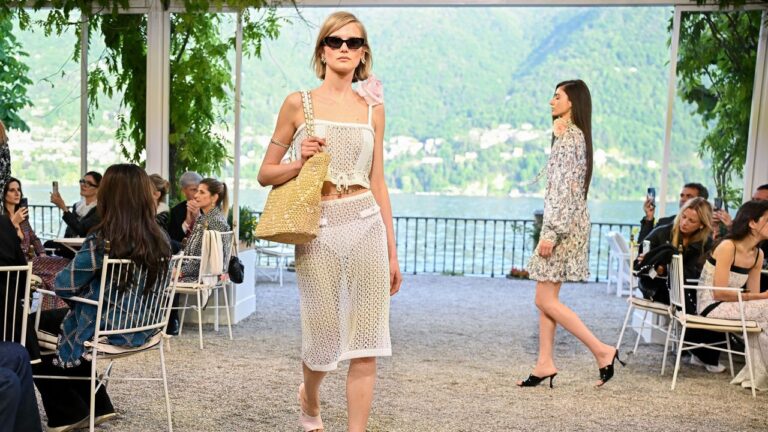Why, this cruise season and elsewhere, is luxury fashion so keen to be displayed in Italy? There are some prosaically logistical answers. For the Italian houses especially (even French-owned Gucci), Italy is an economically convenient choice. And naturally the Italian houses have a culturally genetic affinity with venues in their home country.
Another reason relates to Made In Italy. It’s a smart time for luxury to reinforce its ties to the country’s craftsmanship, amidst a TikTok campaign that proclaims luxury goods are by and large made in China in the wake of US tariffs. Any truths to that aside, most truly apex luxury houses manufacture an overwhelming amount of their product here.
Last year, a report prepared by consultancy firm The European House – Ambrosetti for Kering Group found that in 2022 the French luxury conglomerate generated over €10 billion worth of exports from Italy, around 1.7 per cent of the country’s total. The group has separately said that just under 88 per cent of its supply chain across all brands is in Italy. Chanel, meanwhile, chose Como this year partly to highlight its purchase in April of a 35 per cent stake in the historical silk company Mantero, which is based nearby. Joining the dots between manufacture and marketing through the truthful highlighting of craft and provenance can only serve to counter contemporary scepticism about the value of luxury goods.
Perhaps the strongest reason of all for showing in Italy, however, is Italy itself. As well as the shows (and wedding) mentioned, this year has also seen Pucci show its spring collection in Portofino. Bulgari has an upcoming high jewellery event in Italy, while several other houses and retailers are hosting private events over the coming months in locations including Capri, Venice and Taormina. Persuading HNWI clients to visit any of these sites is not a hard ask.
The fact that Bezos and Sánchez have chosen Venice for their wedding is just the latest example of a global fascination with Italy that goes back to the Grand Tour tradition established in the 18th century. Italy’s cultural history of the Roman empire, Magna Graecia, Catholicism and the Renaissance – combined with the weather, the food, the design and La Dolce Vita – is woven within the country’s deep kinship with craft, quality, and taste. As Roberto Gualtieri, the Mayor of Rome, added at the Alta Moda announcement last week: “Beauty lives here. It is a place with an extraordinary layering of beauty and meaning.”
Comments, questions or feedback? Email us at feedback@voguebusiness.com.
More from this author:
How Duran Lantink won the Woolmark Prize
It’s Demna at Gucci! Fashion’s master maverick will helm Italy’s largest luxury house
Donatella Versace steps off the runway as Dario Vitale is appointed Versace’s new chief creative officer


